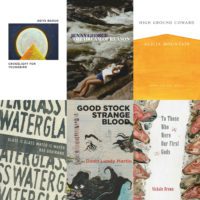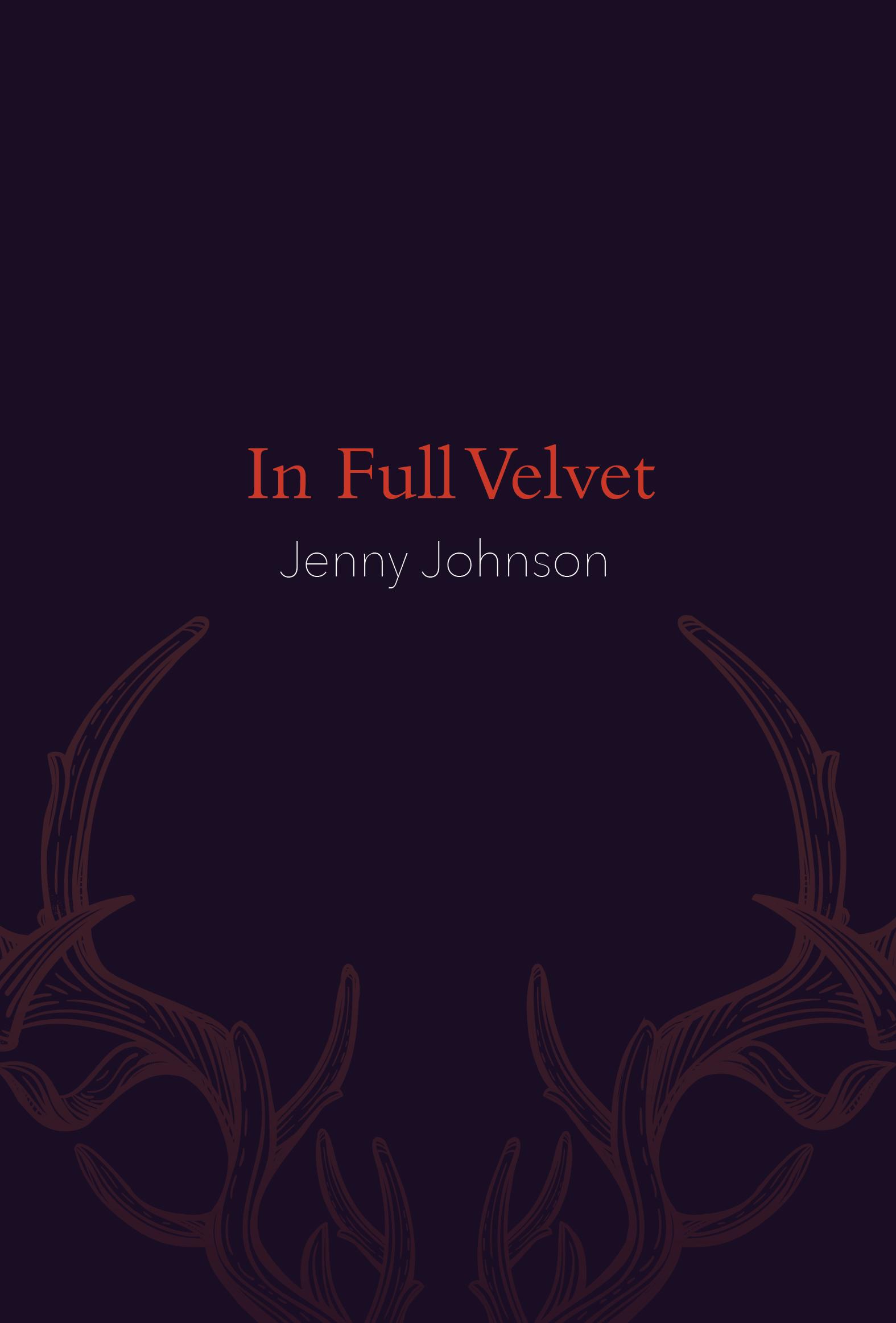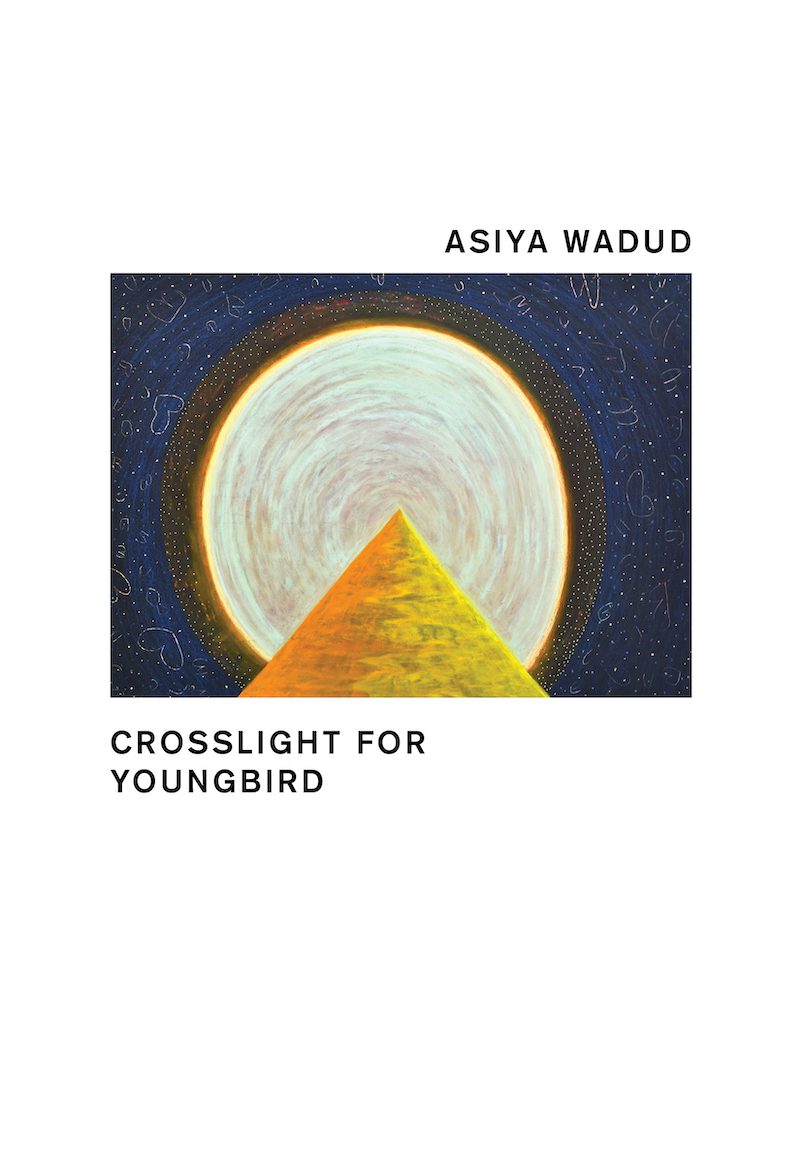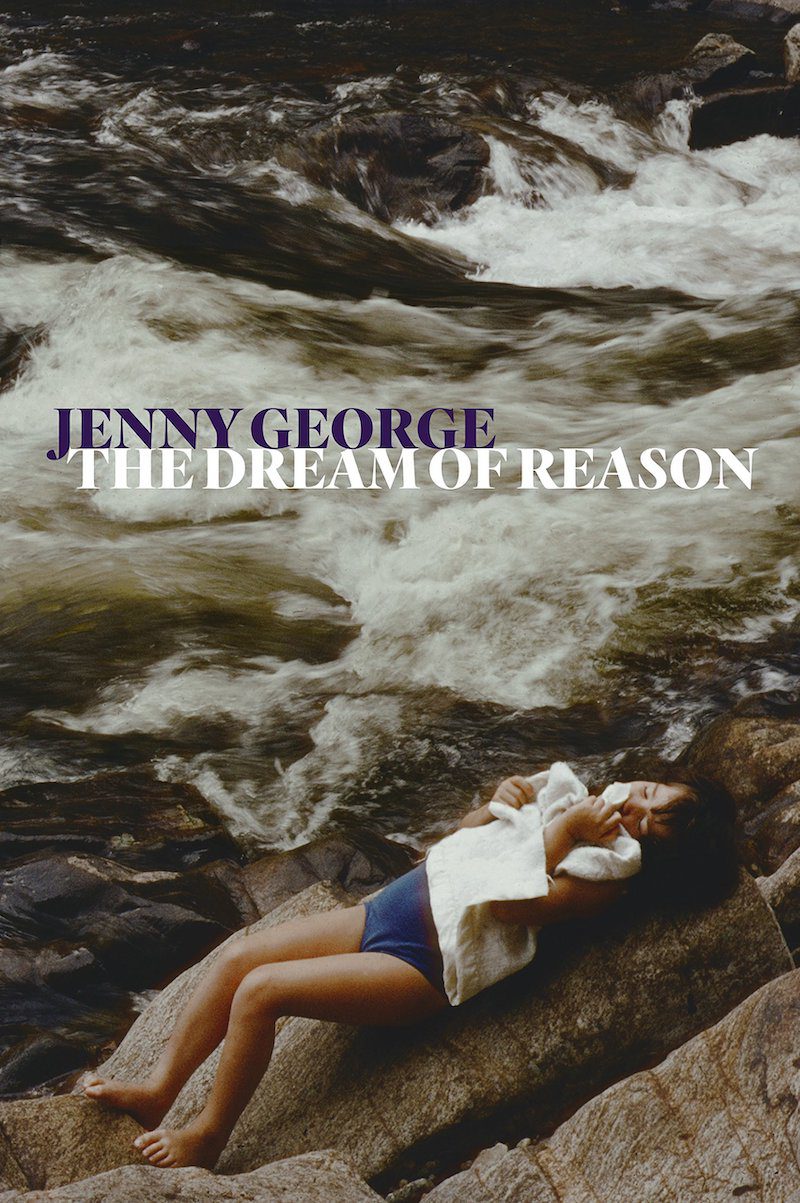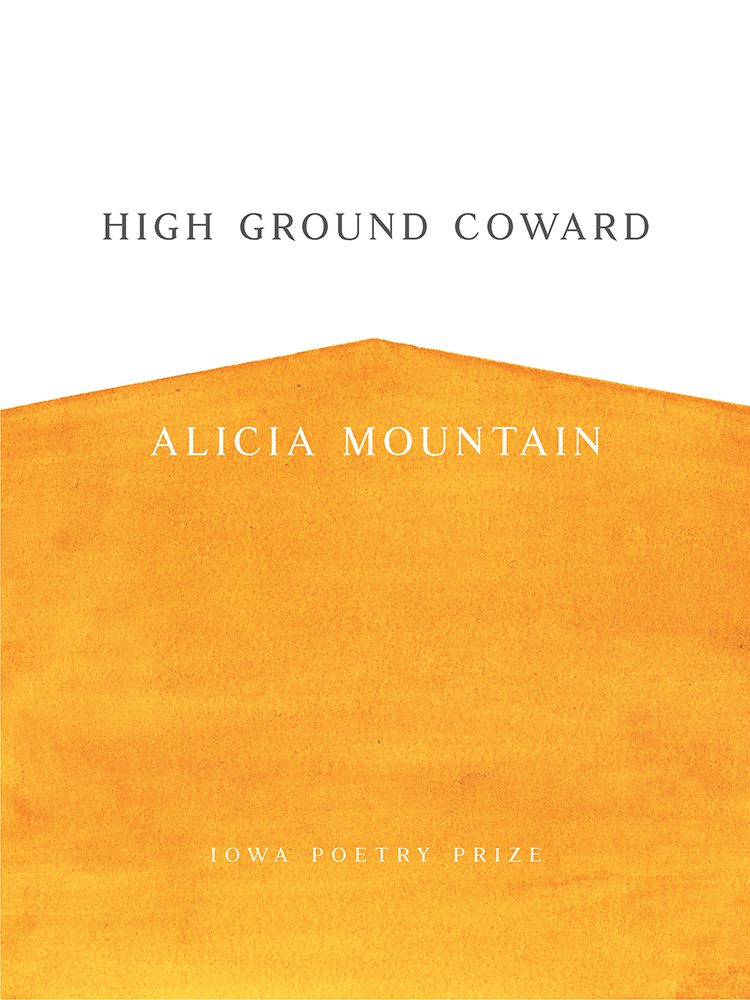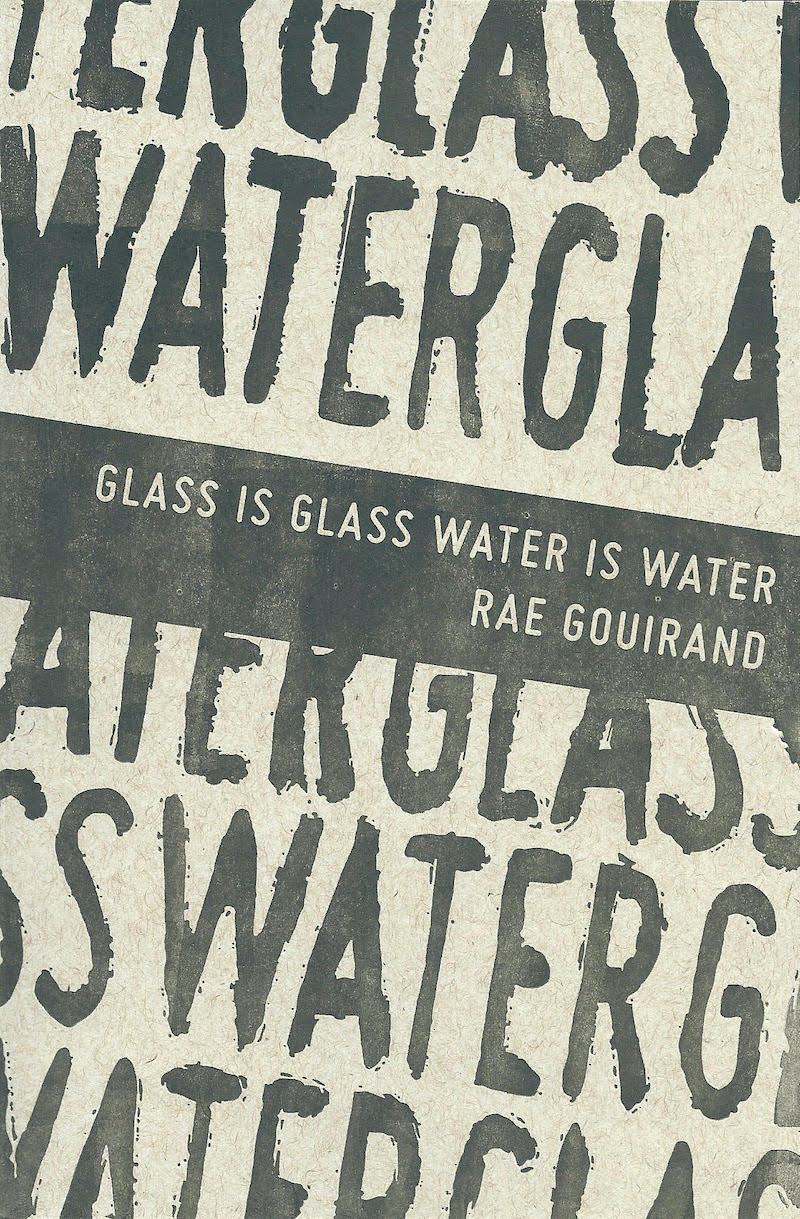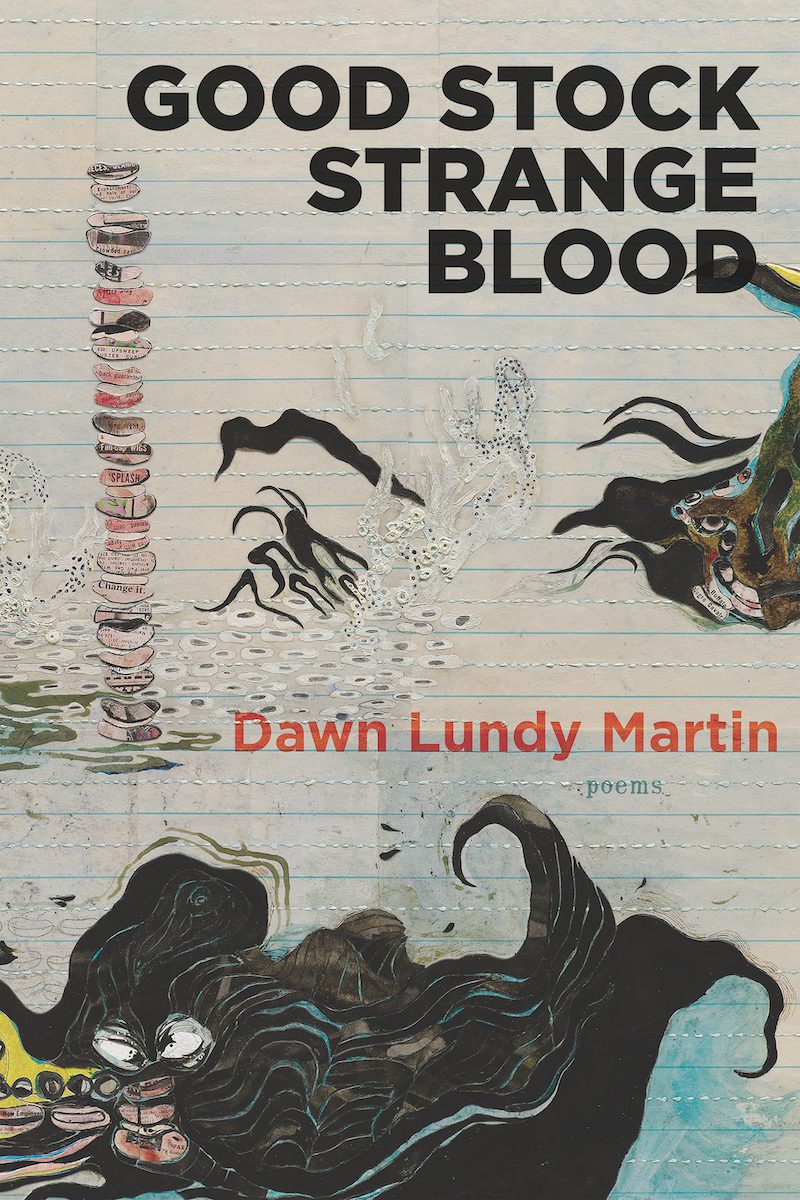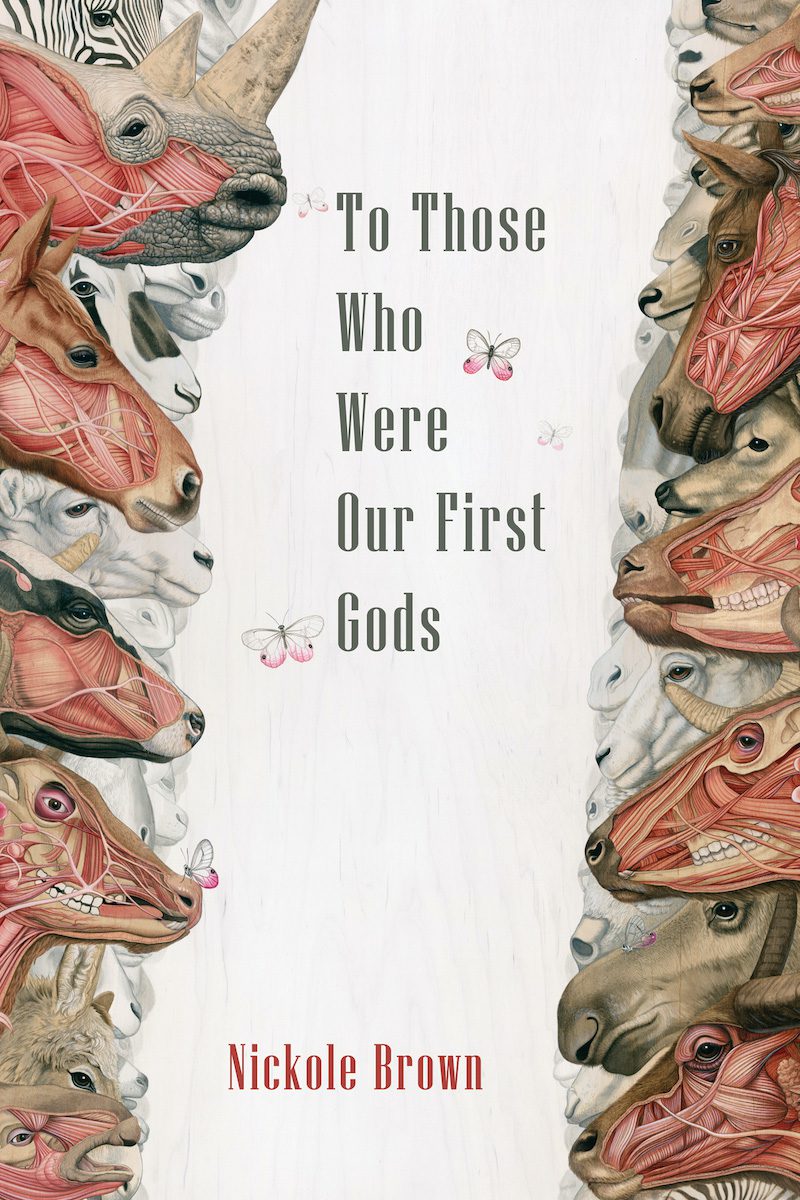I.
During the Women’s Liberation Movement, poets were scribes of passion and purpose for the movement; they operated as theorists and visionary holders of hope. In recent years, lesbian-feminist poets have been canonized in contemporary entertainment. In 2015, Lily Tomlin played an aging lesbian poet and widow in the independent film Grandma. The film opens with an epigraph from Eileen Myles and tells the story of Elle Reid, a fictional lesbian poet well-known for her collection Dragonflies, who spends the day scrounging together $630 for her granddaughter Sage to have an abortion (Sarah Schulman offered a brilliant critique of how unbelievable the premise of Elle not being able to get the money was—a point I take, yet I still enjoy the film immensely). More recently, Cherry Jones played Leslie Mackinaw, a poet and academic fashioned after icon Eileen Myles, in the Amazon Studios series Transparent. While critics quibble with these portrayals, I celebrate the distillation of the lesbian poet as both vatic and human, living and vital to lesbian communities and to our society broadly.
The work of the hundreds of poets that the fictional Elle and Leslie represent is work that sought to include lesbian, lesbian bodies, lesbian desire, lesbian love, lesbian lives, into a broader body politic of the United States. Collections by poets from the women’s movement all reflect these gestures, from popular and well-known works of Audre Lorde, Adrienne Rich, Judy Grahn, and Pat Parker, to lesser known works by SDiane Bogus-Adamz, Willyce Kim, E. Sharon Gomillion, Claudia Scott, Fran Winant, Jan Clausen, Chocolate Waters, and many others. Collectively, these poets demonstrate repeatedly the desires of lesbians to be in broad public conversations about politics and culture; these poets envisioned and demanded lesbian inclusion in the fabric of US political life.
During the 1970s and 1980s, lesbian-feminist poets made lesbian bodies and lesbian lives apprehensible to American politics and culture. That work was successful and profound. The representations of Leslie Mackinaw and Elle Reid are two examples of how lesbian-feminist poets, writing poems, printing them in chapbooks, reading them at women’s bookstores, and selling and swapping poems and books in coterie communities across the United States, changed the world that we live in today.
These lesbian poets were a vital part of the activism that made lesbians visible and changed the way people in the United States respond to lesbians. If anyone ever doubts the power of poetry to make change, they need only look to the past fifty years of lesbian-feminist poetry and its effects on our culture. Change happens. It is dramatic. Poetry transformed lesbian lives. We all benefit from the revolution fomented by words and poems of these foremothers.
While these conversations in the political sphere remain in contemporary lesbian poetry, an increasing chorus of lesbian poets expresses a new concern. Contemporary lesbian poets shift attention from the polity to questions of ecology and ecocatastrophe. Exciting and vibrant poetry results.
The natural world has been fodder for poetry since the beginning, and the poetry of Mary Oliver (now of blessed memory) highlights the power of nature for lesbian poets. I do not mean to suggest that lesbian poets writing about nature or ecology is new; it is not. Rather, the writing about natural world emerging from a group of lesbian poets reflects a new and exciting direction. Previously, I wrote about Jenny Johnson’s extraordinarily beautiful collection In Full Velvet (Sarabande Books, 2017), describing it both in relationship to a lesbian lineage and as a collection that “opens new ways to see and understand the world through a lesbian and queer lens.” Since then, I have been reading more poets writing queer nature like Johnson. Six new collections by lesbian poets explore this queer lens on nature, demonstrating rich and complex modes of thinking.
II.
In her debut collection, Crosslight for Youngbird (Nightboat Books, 2018), Asiya Wadud writes compellingly about borders and immigration; Wadud’s poems speak with beauty and grace to contemporary political headlines. Wadud writes of babies that “someone loved” and “boarded… on a northbound lorry” and imagines Sappho as an immigrant, “mopping the camp’s floors” and “still liminal / awaiting her mother’s remittance” and then “Sappho at the end resettled in Hamburg[.]” Wadud’s queer perspective on migration is profound, filled with hope and passionate aspirations for a good life.
The tone of these poems is mesmerizing; the long poem “testament, a litany for many voices” sonically evokes Pat Parker’s Movement in Black; it is filled with performative gestures and a rhythm that throbs, teeming with life. Wadud evokes a world that is bound by human-made borders but populated by creatures that resist, challenge, and remake those borders; the natural world free of human-made borders is the metaphoric backdrop of this collection.
In “Some latitude. A crease.” Wadud contrasts a lifeboat and a leaf. She writes,
A dinghy is a lifeboat, moored. 3,771 lives lost in the Mediterranean in 2015. A patera is a lifeboat, moored. At its narrowest, the Strait of Gibraltar is 14 kilometers across.
I think with each variegated leaf, the new variegation lends some knowledge, a palimpsest marking some memory. Some latitude. A crease. The variegation tells a story replete.
Wadud’s gathering of objects in this poem evokes both the human and the natural, highlighting struggles within and between both. The Strait of Gibraltar and the Mediterranean separate Europe from Africa. In the space between them, lives are lost, 3,771, to be exact, in 2015. A tragedy, certainly, as the moored lifeboats fail their human charges, but Wadud transforms this tragedy into the variegated leaves of a plant with some knowledge, some memory. The poet witnesses tragedies of the world and returns repeatedly to hope, determination, song. She concludes this poem,
I circle around God, around the primordial tower.
I’ve been circling for thousands of years
and I still don’t know: am I a falcon,
a storm, or a great song?
In Wadud’s metaphysical configuration of the world, nature and the divine unite queerly: falcon, storm, song.
Similarly, in the poem “testament,” she writes,
This is a meditation on god and loss
A meditation on faith forlorn
A sea wall fortifying and strong
A flood of limitless love
This is a fallow field
This is a barren desert
This is a hot wildfire
Extinguished by limitless love
In each of these images of the natural world—sea, flood, field, desert, wildfire—Wadud suggests synthesis that affirms hope and the divine.
Hopefulness and transcendence often collide tragically with human life. In the poem “a bee on the Brooklyn bound N,” the poet observes “this is the exhilaration of life / out of place” then remembers a sparrow, a cockroach, a scorpion, a field mouse, each creature also out of place. Revelry with the natural world is interrupted when another train rider kills this bee “swiping its own metrocard.” Mourning the bee, the poet meditates on her own experience catching and freeing sparrows
who’ve found their way indoors
atop my dinner table
arbiters of a keen wild and
a coming liberation
when I trap them in a dish towel
Even indoors, the sparrows carry wildness and a promise of liberation. These sparrows encounter a different end than the bee. Wadud continues,
releasing them, bright eyed and feral
freeing them in the release
Wadud faces the circumstances of out-of-place beings—the bee, the sparrows—as resonant with out-of-place people moving as migrants or trapped in the Mediterranean. To both, she brings an expectation or a hope for liberation and freedom
A poem late in the collection opens these themes of the nature world and immigration to human-made catastrophes. In “we three,” Wadud writes,
Today my sister taught me how to float. Now, I am squinting straight into the sun and no one is there except we three. We three are a small nation, all eyes closing and a peace so peaceful and a water so still and waveless beckoning what’s reckless as it washes over our forearms. I’m not sinking, I’m floating. We’re all bobbing creatures amniotic salted on this island of deserted windmills. No one has even thought about the children at all. The children don’t care much if they are burning under the sun, at least not for this moment.
This passage from the prose poem reveals some of Wadud’s artistry. She turns Stevie Smith’s “Not Waving but Drowning” upside down with the formation of “I’m not sinking, I’m floating,” and suggests that the three children floating in the water are a small nation at peace, juxtaposing that with the Cervantes allusion about tilting at windmills. The turn in the final line where the children do not care about burning in the sun, at least for this moment, opens this ocean scene to a larger concern about catastrophic climate change, the sun burning in the sky, affecting the children even as they or their parents do not care at this moment. They may isolate themselves as a nation alone, but above the sun still burns.
III.
The Dream of Reason (Copper Canyon Press, 2018) by Jenny George takes its title from Goya’s bestiary where a sleeping man dreams of flying creatures. George’s poems are populated with ranch livestock—pigs and cows and birds and frogs. Like Michael Walsh’s The Dirt Riddles, The Dream of Reason plumbs farm life in its fecundity—and its mortality—to distill human truths.
George provides an “Encyclopedia of the Dead” where “trinket boxes” serve “as coffins,” and later an account of loose tooth as a young child. While the tooth, “a snag in the clam of my mouth,” is worked loose, the young child watches an adult kill a sick calf. After the shooting the adult notes, “It never gets easier” and when the child’s tooth falls out, she buries it “under my pillow and it grew into money.” Transformation through time and dreams, as well as through pain and heartache, occurs throughout these poems.
Ultimately the poems in The Dream of Reason appeal for mercy. “The Belt” is a poem about a laboring cow who “heaved all day against the boards / of her enclosure” then delivered her calf and “stood. Drank a little water from the trough.” The cow is the pained creator in the world, and the belt that she chewed to alleviate the birthing pain “was like chewed bread.” From these ordinary images, speaker tells us, “how / did you imagine mercy would look?” In George’s poems mercy looks hard-edged. Mercy is a cow-chewed belt, a difficult world where children die and calves are born sick, a child who carries a femur bone found on the ground from a baby animal as a talisman. Mercy is what the reader is asked to embrace from this wounded world.
George’s close observations of the natural world lead her to note in “Spring,” “A devastation has occurred. Does it matter / what it was? Who commanded it?” There are dozens of devastations in the world and in these poems that echo the reader’s own losses and devastations. How to respond? The answer George offers comes from a bullfrog. She listens:
A lone bullfrog bellows from the woods—a single, wet note.
Almost a bark, but deeper.
Sexual. Discordant.
Night after night, this astonishing sound.
Where Wadud offers hope and redemption in a broken world, George hears a bullfrog bellow. Both evoke a natural world run amok, and both listen “night after night” for a sound that astonishes.
IV.
At one time, discovering that someone was a lesbian, that a poet was a lesbian, was just that: a discovery. From that revelation emerged jubilance, a sense of a shared journey and often joy. Today, lesbian is not a revelation. Lesbian is no longer a discovery. Most often, lesbian seems like one additional bit of new, somewhat mundane, information. As a community, we continue to process collectively what it means to live in a world where the excitement of sexuality and where the revelation of a lesbian or queer sexual orientation is absent, or at most muted, and quite often ordinary.
In the absence of the revelatory, of epiphanies that once adhered to our bodies, discoveries continue, revealed through language, still apprehended with the tongue, but differently—like the movement through the mouth from salty to sweet. Alicia Mountain’s debut collection, High Ground Coward (University of Iowa Press, 2018), harkens back to the discovery of lesbian, but the most energizing discoveries in the collection are those that reveal intimacy with the natural world.
In “The Book is a Hungry Darkness,” Mountain writes,
My desires are berries because they are small and many.
Fig leaves embarrass the body.
Wine is my water when I am writing,blood when I am dancing, sweating.
Mountain distills the essence of berries and fig leaves in relationship to the body and finds the liquids of the body within the world. This rich blending of the human and lesbian body counterpointed by the fruit of nature is common in lesbian poetry over the decades, but it carries a new heft in conversation with other poems and poets. This poem continues with an exploration of religion and cosmology as to queerness:
My parents’ god is the sun
at 7 a.m. in December, that close to nothing.My father had no sons.
My mother sends my wife her love.
In all of this, forgivenessassumes sin and I’m not sorry.
I am the snake and I am the silence,
an animal’s rib picked clean.
The first three lines of this passage challenge the idea of god, found in the absence of light at the end of the year in the Northern Hemisphere, then note the failure of patrilineage. From this darkness emerges the mother sending love to the wife of the female speaker. Mountain plays with the notions of heterosexuality and queer subversions in the next lines and concludes with biblical allusions to snakes and ribs, a metaphoric return to god. Refusals are at the center of this poem: a refusal of sin and a denial of regret. These linguistic actions wrapped in metaphors from nature and religion constitute discovery in this poem—a defiant discovery of a time when queerness is no longer a revelation.
In the most luminous poem of this collection, “Hawk Like a Steeple,” Mountain situates marriage in relationship to home:
Sitting at the crest of Waterworks Hill
we decided we’d never get married.
I spread my arms to say just this.
You’d already left every home for me.
That final line of the quatrain encapsulates lesbian love and desire from the days when women literally and figuratively left their homes and all that was familiar to love another woman. This reality is now supplanted by acceptance of lesbian couples in many places in the United States. Mountain writes this new reality later in the poem, recounting a wedding:
It was the most Quaker wedding,
simple, you and me in our coats
looking south over a new April
stranger town. Held a branch
behind your back like a bone,
ate strands of each other’s hair—
no ring or witness. Rainless sky.
The poem concludes with a couplet that further unites the bodies of lovers with the earth, configuring them as a valley filled with song:
Silence can’t help but sing the coal trains
in their couplings through the valley.
V.
Like Mountain’s collection, Rae Gouirand’s newest collection, Glass Is Glass Water Is Water (Spork Press, 2018), continues the tradition of poetry by lesbians adumbrating lesbian experience into US politics. Gouirand’s poems about ambivalence toward marriage in the post-Obergefell world continue this work with exquisite beauty and insight. Her collection also engages the lens of a queer natural world and speaks with a common voice alongside other contemporary lesbian poets.
In an early poem, Gouirand writes:
I am not asking anyone to take on the water.
I am not asking anyone to take on the air.How to think of a place needing rain when
it feels this close to disappearance. A desert is nota lack—like every living being I used to be
a younger version of myself. I do not miss butenvy her scent for water, the way
she divined.
The sly inference of the opening lines is that the speaker may be asking us to take on water and air, to contemplate the meanings of places needing rain, the scent of water. Connecting this with the title of the collection, a few lines later, the poet writes, “what is a glass but a vessel we raise.” The poet concludes the poem noting that it helps to say,
It has not rained and we need it, speaking in
the plural, covering the singular as the rush
of absent things would cover their first sign.
Gouriand draws attention to the move from the singular lyric “I” to the collective plural, implicating a large vision about the qualities of rain and its absences.
In “Elkhorn,” Gouirand connects questions of sex and sexuality with the natural world in queer ways. She writes,
While we’re waiting, she explains
oysters might change sex one or more timesduring their lifespans, which I hadn’t
considered in the time since I’d come to usethe word girl to mean something delicate
for one person to understand.
Sex changes from the natural world spark the speaker’s imagination. These lines demonstrate both the biological and the social constructions of sex and gender, where the natural world becomes a tool to refract human experience.
In the poem “Ice,” Gouirand unites these two impulses in lesbian poetry—making lesbian desire visible to the body politic and queering lesbian desire through nature—to great effect. Here is the complete poem:
At its hardest, water doesn’t move—
freedom of form for density of word.The middle force of the core is all vowel.
If the question were would I choosemy love or hers, I’d go unanswered,
unconsoled, ice on a stove.
In the first couplet, Gouirand closely observes the natural world in its states of transformation. Water, an element of transformation and change, visibly accompanies many experiences. As the second stanza yields to the third, a question emerges about the intimacy of lovers. The answer emerges from the water in the first stanza, now “ice on a stove.” The image of melting ice, even placed in the domestic sphere on a stove, can no longer exist without the cultural heft of ice melting at the poles as a result of human-influenced climate change. The speaker lets the question “go unanswered, / unconsoled” just as questions of catastrophic climate change are left unanswered, and as humans and animals are left unconsoled. The resonances in this short poem are powerful: in addition to the formal and structural mastery, Gouirand demonstrates an engaged conversation with various appellations of lesbian poetry, naming lesbian love and desire and the conditions we live in on the planet today.
VI.
Dawn Lundy Martin’s Good Stock Strange Blood (Coffeehouse Press, 2017), her first book since her 2016 Lambda Literary Award-winning Life in a Box Is a Pretty Life, is a polyvocal collection of poems that grapples with how society views and responds to black bodies. Martin won the 2019 Kingsley Tufts Poetry Award, which has a purse of $100,000, for this collection, recognized by the judges for its “uncompromising poetics of resistance and exactitude.” The poems in the collection illuminate history and our engagements in history and with the land. Good Stock Strange Blood emerges from a libretto with multiple people voicing three characters: Land, Perpetuus, and Nave. While these characters are no longer visible in the collection, they exist in palimpsest; often I had the sense that Land was speaking, whispering, begging to be heard.
As in her earlier work, Martin grapples with race, particularly with how race is constructed and lived in the world. While in this piece I explore other attentions in her work—putting her work in dialogue with other poets and environmental issues—I recognize the magisterial significance of her poetry in relationship to race. In the poems in Good Stock Strange Blood, Martin evokes images from slavery and from borders. In the poem “—My form against those at border—” she writes:
“—My form against those at border—”
knocking among other refugees
—the islands
—no one to help
—thousands buried by waterA butchered animal at my feet.
In this way, Martin’s work resonates with Wadud’s poems, though each write and imagine different borders, different passages, different deaths. Martin continues with images that ground her work in the nature world:
Wolves howl. Soot falls from sky.
The rescuers are never prepared.
And we, here, amid a failure of images.Scrub a spot whiter than before.
Demarcate before there is nothing left
Breath into white sand. The dead ache so.
One strategy Martin uses is pastiche, gathering images and layering language to create emotive effects. This poem exemplifies its effectiveness—the final sentence, “The dead ache so,” resonate with pain.
In a later poem, “Faith is hum—,” Martin writes,
hum is rocking. Rocking is to preserve our black bodies in glass. To hum is to maintain the myth of wholeness. What will we find in heart-cave, pull back sea-rot, the already multiple, the metropolis? Look what I am holding! Not desire, but infinite multiplicity, the mouth of existence. On one side waters rise.
This passage is haunting; the collection of sounds and sensations that come together evoke aural and physical sensations, culminating in the ominous final statement, “On one side waters rise.”
In the penultimate poem “For all the burned languages—,” Martin writes:
for all the silken hair
and grope in heat of—For all the openings against wills,
_______howls against lips
sewn tight, and rough cuts in hours
before dawn, the handprints
_______left as pungent reminders
This formulation of handprints leaving “pungent reminders” of both Martin’s “burned languages” and some of her earlier images, provides a human imprint on these ephemeral conditions, particularly when Martin continues: “For all of it, wet and steeled.” The poem concludes with this quatrain:
Our mercurial grammar
_______and this I-cleave
The black in the black body,
_______a tremor so tender.
Emerging from the “mercurial grammar” is the tremor filled with tenderness. As with other poems late in the collection, this one does not provide conclusions, but it does offer a place to pause, a place to rest, even if briefly.
The final poem includes the question, “How to say, We remain / intact, however fractured?” The collective first-person plural suggesting a multiplicity of antecedents: we African Americans we humans we the land the planet the environment. Martin concludes this poem—and the collection—with these lines:
Leave wreckage by the roadside
Burn all decayed tissue.
Tightrope from which we emerge.
Emergence suggests a beginning, even if fraught. Good Stock Strange Blood unites the political with the environmental in ecstatic, sobering ways.
VII.
Nickole Brown’s chapbook, To Those Who Were Our First Gods (Rattle), addresses animals with Brown’s characteristic sharp language, Southern aphorisms, and tart observations. Brown maps the ark of our world like a modern Naamah (the wife of the biblical Noah), wryly noting in an address to Mary Oliver,
Ain’t no foxes here, Mary. Ain’t no grasshoppers resting
in my picnic palm. Ain’t too many creatures worth a poemlike yours, just mewling strays tucked under the dangerous warmth
of a pickup’s hood.
Brown’s homage to Oliver is fleeting; she eschews the perfectly constructed natural world of Oliver and other progenitors of nature poetry.
The animals of Brown’s ark are abandoned, feral, needy. Like George’s livestock on the farm, Brown’s animals occupy a world transformed by humans. These transformations benefit some animals and harm others, a metaphor for our struggle with catastrophic climate change. Like Wadud, Brown finds divinity and hope in human actions to heal the world, but the road to hope is dark and complicated.
In the most powerful poem of the collection, “Against Despair: The Kid Goat,” Brown tells us about two women who rescue animals, and in doing so, situates all lesbians in relationship with the work of rescuing the world. She writes:
Reader, meet the two women who sunk
everything they had into taking in broken
animals—the gimpy and oozing
critters, the ugly, lopsided, tail-less
pets, urine-soaked and drooling, zested
with fleas, the matted and discarded
scrapheaps left growling and bucking, pissing
on everything, the good-riddance left roped
to a chain-linked fence.
Here as elsewhere, Brown reminds readers of the hardship animals face from human affliction. With roller coaster ups and downs, this poem unfolds in a long narrative of rescuing a goat. At the end of the poem, Brown packs the power of her cosmology. She writes:
But here is the point: Do not ever
let yourself think it didn’t matter.It matter then
as it matters now, because untilthis morning rose dull on the horizon
with this useless, good-for-nothing
goat now dead on your floor,regardless, in spite of, no matter,
you fed a beast worthless, a reallost cause not unlike
this whole stubborn,
beautiful, fucked-up planet
about to seize and drown
in its own melt.
Linking the lost cause of rescuing a sick goat with climate crisis, Brown praises the work of the two lesbians running the rescue, and in doing so, expands rescue work and care work—including working to save the planet—as meaningful, as something that matters:
Hope, you know by now,
is not a thing you feel
but something you do,
and this is your job. It’s what
you do; it’s what needs to be
done.
This conclusion echoes one of my beliefs about lesbian poets: they do the work that needs to be done. They speak what needs to be spoken. They write what needs to be written. Then, they share it with the world, with those listening, with those interested, in every way they can: in print, online, in small journals, in handmade books. It’s what needs to be done.
As I once discovered the poems written by lesbian-feminist poets in the 1970s and 1980s in libraries, largely out of print, but preserved in handmade chapbooks, in periodicals that had ceased publication, and in books with glued spines delicate and hardened, I imagine lesbians decades from now discovering these poems about our world, our environment, about the possibility of ecocatastrophe. I hope that these lesbians twenty or more years in the future are writing a narrative of change and success. I hope the composites of Asiya Wadud, Jenny George, Alicia Mountain, Rae Gouriand, Dawn Martin Lundy, Nickole Brown emerge then as successful and fully realized as Elle Reid and Leslie Mackinaw do today. I know they will, if we read, savor, and treasure these books, these poems, these poets’ words.
